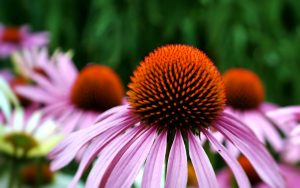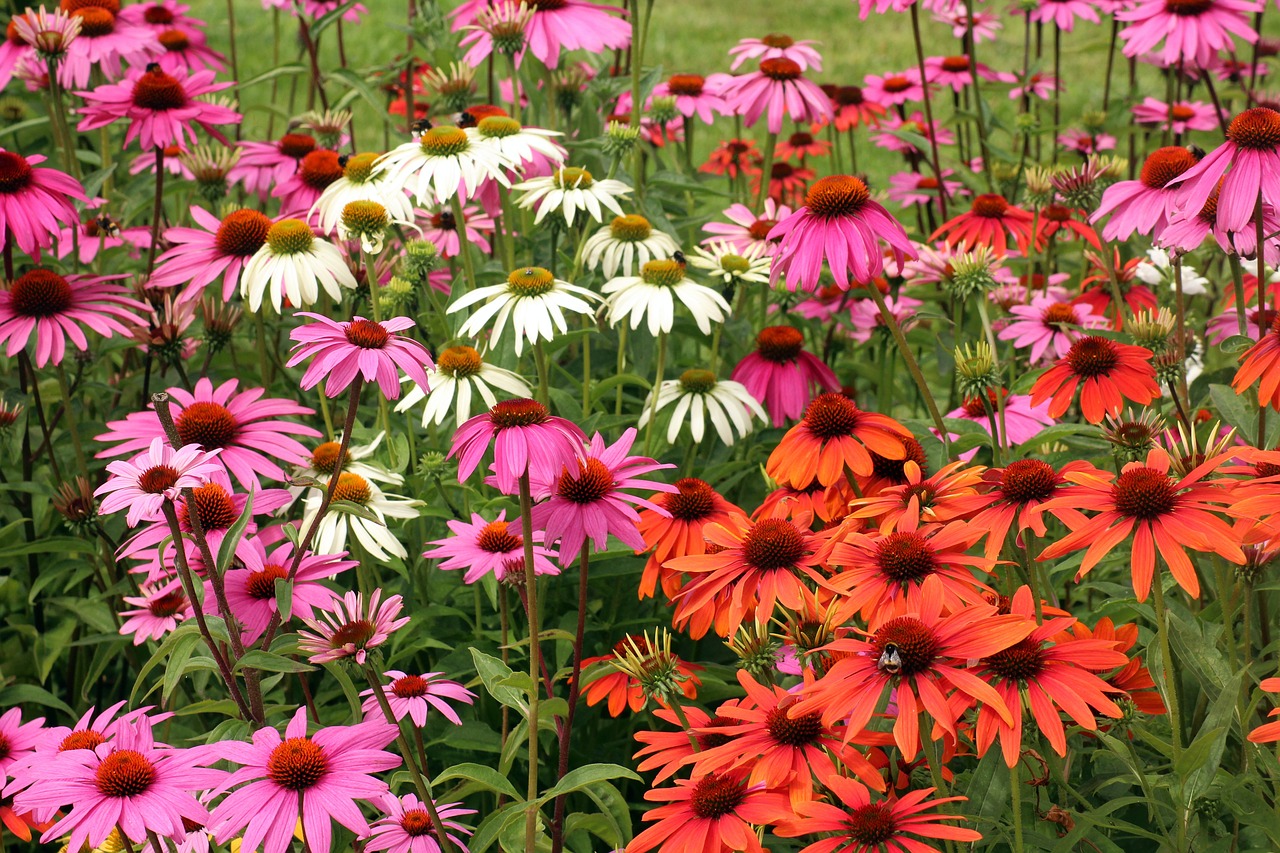Last Updated on April 5, 2024 by Real Men Sow
Echinacea, also known as Coneflowers, are perennial plants that can live for many years. You can leave them alone for up to four years, but they may be able to benefit from being divided into two plants that will live for many years. If you want this beautiful flower to light up your room, growing echinacea in pots is a great solution for you.

Things To Know About Before Growing Echinacea in Pots and Outdoors
- They can grow up to 90cm/34 inches tall with a spread of 45cm/18in. Echinacea purpurea, for example, can grow to 1.5m in height.
- The first leaves appear in April.
- Single-stemmed flowers appear in late summer and last until early August, if the conditions are favorable.
- The leaves fall in October and November.
- Echinacea can grow in all soil types, from acidic to alkaline. It is best to amend the soil conditions if you are planting in clay. They are happy in sandy, loam, and chalk soils.
- They love full sun, but can tolerate some shade. Sunny positions produce the best flowers.
- It is a good idea to split the foliage into three pieces and replant the rest when it becomes too dense.
- Echinacea is a low-maintenance plant. Echinaceas require moist soil in their first year, but once established, they can withstand drought well. Faded flowers can be removed to encourage new growth.
- These flowers make great cut flowers, but the fresh stems last only five to six days. Dried flower heads look great and can last for up to six months.
- Echinacea smaller than 5 cm will thrive in deep containers. However, Echinacea larger than 5 cm will not grow well in these containers.
- Many varieties can be grown in any part of the UK, down to -22°C/ -11°F.
Growing Echinacea in Pots
You can choose to be in the sun or in the shade. You should choose a spot where the soil is normally moist, but not waterlogged. Add lots of compost to heavy soils and make sure it drains well.
You can plant it all year long as the soil isn’t frozen and you water well when the conditions are dry. Potted Echinacea is best planted between March and April and September through October.
How long does it take for Echinacea to bloom?
Echinacea doesn’t always bloom well its first year. Plant in September or October to ensure a great display next year. Planting more than Echinacea requires that you allow between 30m and 45cm (12in-18in) space between each plant. Dig a hole twice as wide as the root ball. Add a few drops of blood, fish, and bone to the hole and then work it into the ground.
Fill the hole with soil to the same depth as the pot. Firmly but gently fill the hole around the root ball. To settle the soil around the root ball, water well.
Taking Care of Echinacea in Pots
When established, Echinacea is a low-maintenance plant. Keep them well watered for the first year to keep the soil moist, but not too dry. The second year, water only if it is very dry. Echinacea plants have long taproots that ensure adequate water even in the most dry conditions.
To conserve water and discourage weeds, mulch the plants in spring. In the middle of June and August, feed them with a long-lasting fertiliser like fish, blood, and bone. Avoid feeding them with nitrogen rich fertilizers, which can only encourage excessive foliage at the expense of flowers.
To encourage the growth of more flowers, pinch individual flowers that are beginning to fade. Cut the plants to their original height in November to December. After three to four years, flower production will drop. Divide the plant into three pieces with a knife. Replant one plant where it was original and plant the rest elsewhere. Water well. To ensure roots are moistened by natural rain, divide them in this way in October.
How To Grow Echinacea in Containers
Echinacea has long taproots and the taproots are longer for taller plants. Choose one of the shorter varieties, such as Echinacea Purpurea Pink Double Delight’ or Echinacea purpurea Rubinglow’.
They prefer moist, well-drained soil. Regular watering is essential. The smallest container for plants is a 45cm/18in diameter. A larger container will make the plant happier and will need less watering. It is okay to have a container 30cm/12 in deep. However, it will require less watering the deeper the container is.
Your plant should be fed with fish blood and bone in spring and fall. You can also feed your plant once a month with liquid food.


